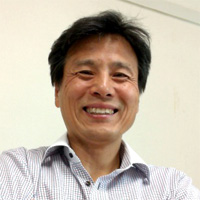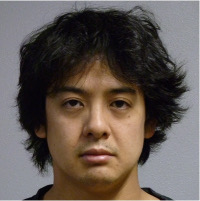Yasufumi Kojima (Professor)

In very compact objects such as black holes and neutron stars, gravity is extremely strong, and enormous amounts of energy can be released in very short periods. Such events are rare, but they are very bright, and even distant sources can be seen. There are several unresolved issues in relativistic astrophysics, although they can be roughly estimated. One such issue is related to pulsar magnetospheres, in which electromagnetic energy associated with the central star is converted to the kinetic energy of particles. Another subject of interest is sudden flares associated with black holes or magnetars. The magnetic field produced by magnetars is much stronger than that for normal stars, and dynamic processes may give rise to emission of intense gravitational waves. The ability to detect such waves would open up a new window of observation, different from the electromagnetic processes observed so far. As a member of the theoretical group, I am looking forward to the direct detection of gravitational waves within a few years (maybe in 2017) by the Japanese Gravitational Wave Observatory KAGRA, which is now under construction at Kamioka, Gifu.
Nobuhiro Okabe (Associate Professor)

My research field is to map out "Dark Matter" distribution in the Universe. Dark matter, which accounts for about 27% of the energy content of the Universe, is unknown and invisible matter. The invisible matter cannot interact with ordinary matter via electromagnetic forces, thus unable to see it through the light like optical and X-ray wavelengths. However, gravitational lensing effect, predicted by Einstein's general relativity, enables us to measure the dark matter distribution. The Japanese Subaru telescope is the best facility to measure gravitational lensing effect in the world. The probe of the Universe using new prime focus camera, called Hyper Suprime-Cam mounted on the Subaru telescope, is now being performed over 5 years by an international project between Japan, Princeton University and Taiwan. If the same probe were operated by using the Hubble space telescope, it would take more than 100 years to complete the project. This probe is expected to be a breakthrough for understanding the structure formation of the Universe. As aside, the best object to study the dark matter distribution is galaxy clusters, which is the largest known gravitationally bound structures in the Universe, with a mass about 100 trillion to quadrillion times of sun. Galaxy clusters can be investigated by various wavelengths. For instance, hot-thin plasma bound in galaxy clusters can be observed through X-ray wavelength. I study the interplay between dark matter and visible matter, called baryons, on the basis of a combination of different observing techniques.
Shota Kisaka (Assistant Professor)

I have been studying high-energy astrophysical phenomena caused by compact objects such as black holes and neutron stars. Compared to the size of the entire region affected by such phenomena, compact objects are extremely small, and due to the influence of surrounding substances, it is generally difficult to obtain direct information from the vicinity of compact objects. However, rapidly variable electromagnetic radiation such as pulsed emission from a rotating neutron star, and gravitational wave radiation that can propagate without interacting with the surrounding environment enable us to directly "see" the vicinity of compact objects. Using these observational data, I have been studying the energy extraction mechanism from compact objects and the energy conversion mechanism for plasma kinetic energy and radiation near the stars, especially the particle acceleration and electromagnetic radiation by a strong electric field that fluctuates violently like discharge phenomenon and the production of a large amount of plasma by an electromagnetic cascade under extreme environments such as strong gravity, high density, and strong electromagnetic fields.